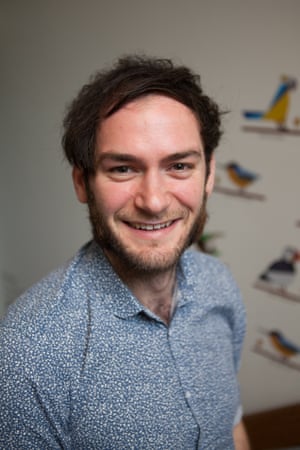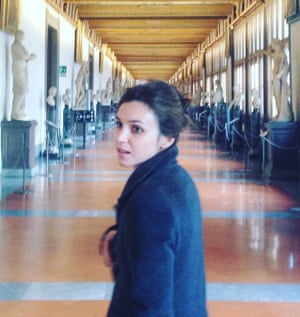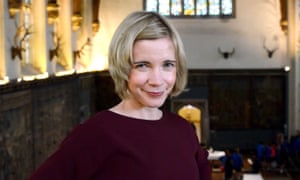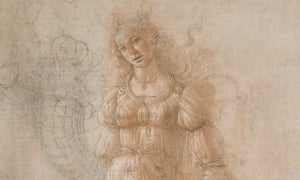Daniel Martin, curator of making, and Lucy Bamford, curator of art,Derby Museums
Tell us something we don’t know about being a museum curator

Daniel: Probably most things. The most common follow-up question when I tell people what I do for a living is: “Great! What’s that then?” It’s quite hard to answer. We don’t spend all day lurking in musty stores any more; it’s all about people. It’s their stories and complexity that really make collections pop.
Lucy: A popular misconception concerns museum gloves. We rarely use white cotton gloves. Nowadays we use synthetic rubber ones, which make your hands sweat. It’s not as glamorous as it might appear.
What career insight would you give to an aspiring curator?
Daniel: Nothing is as important when you’re starting out as gaining experience. An undergraduate and postgraduate degree is a wonderful foundation, but employers will see it as just that. Experience gained via volunteering, internships and work placements will always be preferred over a degree from a prestigious university.
With government cuts facing our sector over the coming years, make sure that being a curator is something to which you’re totally committed. There will be lots of short-term contracts and project-related work throughout your career. Curating is no longer a suitable choice for those seeking long-term stability.
Lucy: Be open-minded and prepared to dig deep often for creative solutions to an unimaginable range of problems and issues. It’s not easy, but it is rewarding.
No other job has given me the opportunity to meet so many interesting people and learn so many new things. Working in a museum has given me a connection to people – to the rest of humanity – that I never had before.
No other job has given me the opportunity to meet so many interesting people and learn so many new things. Working in a museum has given me a connection to people – to the rest of humanity – that I never had before.
What’s your favourite career artefact – and why?
Daniel: As a vintage motorbike enthusiast, I’m biased towards the rare and beautiful Silk 700S. We’re restoring the bike to running condition in co-production with museum-goers and an original Silk mechanic this year, so look out for me on my tours in 2017.
Lucy: Mine is a work by 18th-century artist Joseph Wright of Derby. His Orrery, Alchymist and Earthstopper are justly esteemed and well-loved, but his self-portrait in pastels catches my breath every time.
People know him as an outstanding painter, but he was an equally-skilled draughtsman. His dark, velveteen self-portrait reveals a deeply troubled man, given to bouts of debilitating depression and self-doubt. The eyes have it; you feel as if you might know him. The medium carries a tantalising hint of his presence as well; pastel feels intimate for the proximity of the artist’s hand – a gentle smudge with the finger or “stump” to soften a line. It’s mesmerising.
Lucy Worsley, chief curator, Historic Royal Palaces
Tell us something we don’t know about being a museum curator
One thing that’s bound to annoy any museum curator is other people abusing the word for what we do. In a world where department stores talk about “curating” their shoe selections or whatever, people think that curating just means choosing nice things. But this is only half of it. Our real job as museum curators is to look after artefacts from the past, yet also to be the repository of knowledge about them, to be expert, to have spent 10,000 hours immersed in the subject.
Curating isn’t just a matter of taste. It involves building up real knowledge of the items in your care. As the world gets quicker, and shallower, and bite-sized, retaining our ability to take a deep dive into history is more and more
important.
important.
What career insight would you give to an aspiring curator?
In big museums, the role of the curator has shrunk in recent years as different branches of curatorial work – such as interpretation, or learning, or conservation – have split off and become professions of their own. A lot of people think: “Hum, I’d like to be a curator,” but actually they would be more interested in one of these other activities. If you want to experience it all, though, get yourself to a small museum, where all hands have to do everything.
What’s your favourite career artefact – and why?
Lots of items that survive from the past are high-status, valuable things that people have treasured. For us at Historic Royal Palaces, that means things belonging to kings and queens. But I like things that have survived accidentally and show the seamy side of palace life.
A few years ago, archaeologists working in the privy garden at Hampton Court dug up pieces of a tudor chamber pot – or “piss-pot” as they would have called it. It was sent off for laboratory analysis and was found to contain traces of genuine tudor urine. Yes, it’s a very unimpressive object, but once you know a bit about it, it’s gripping.
Ana Debenedetti, curator of paintings, V&A
Tell us something we don’t know about being a museum curator
Contrary to popular belief, we think as much about the public as we do the works of art in our care. Our job is to facilitate and promote access to the museum’s collections. The V&A has an extraordinary collection of drawings and paintings, which is actually not very well-known to the public. So we’re seeking to create as many full-catalogue online entries as we can, with photographs.
We also organise displays and exhibitions; the public can view individual works by appointment in our print room; and an opinion service is available the first Tuesday of every month. It sometimes looks a little like an episode of the Antiques Roadshow but, of course, we can’t provide valuations. We see some fantastic works, but not all works are what they seem. For example, it can be difficult to explain to someone that their piece isn’t an original Winnie the Pooh drawing, but a mid-20th century commercial reproduction.
What career insight would you give to an aspiring curator?
A curator is someone curious, dynamic and driven by passion for art in all its forms. Although it’s expected that we specialise in a particular area, I think it is most rewarding to expand that expertise and see to what extent artistic movements are in constant dialogue with each other over time and place. At the V&A we seek to show these interactions in the galleries by interweaving many objects of different types (and from different cultures) across a long timeline.
What’s your favourite career artefact – and why?
I’m co-curating the forthcoming Botticelli Reimagined show and was particularly happy to to include some of his most beautiful drawings. I have expertise in Renaissance paintings, but my passion lies with old masters’ drawings.

Looking at drawings allows you to observe the artists at work thanks to the variety of materials and techniques. In this case, the artist’s choice of the material and technique provides an insight into his mind. The subject of a drawing can be as different as a human figure, a landscape or a building, but what the drawing can show is the artist thinking, plus a chance to observe and examine his reasoning as he seeks to explore and resolve complex aspects of the design.
In the forthcoming show, we present two spectacular Botticelli sheets. One represents his Allegory of Abundance or Autumn and the other, his Allegory of Faith. The former is considered one of the most beautiful drawings of the Renaissance: an image of feminine beauty capturing the essence of the characteristic Botticellian nymph, which recurs in many of the his painted compositions and has almost become the hallmark of his oeuvre.
The latter, by contrast, looks much more laborious and appears less graceful.
Only 20 years separate the two drawings, but this dramatic new style reveals the evolution of an ageing artist confronted by a change of taste following the political upheavals in Florence.
Only 20 years separate the two drawings, but this dramatic new style reveals the evolution of an ageing artist confronted by a change of taste following the political upheavals in Florence.
αναδημοσίευση από http://www.theguardian.com/






Δεν υπάρχουν σχόλια:
Δημοσίευση σχολίου